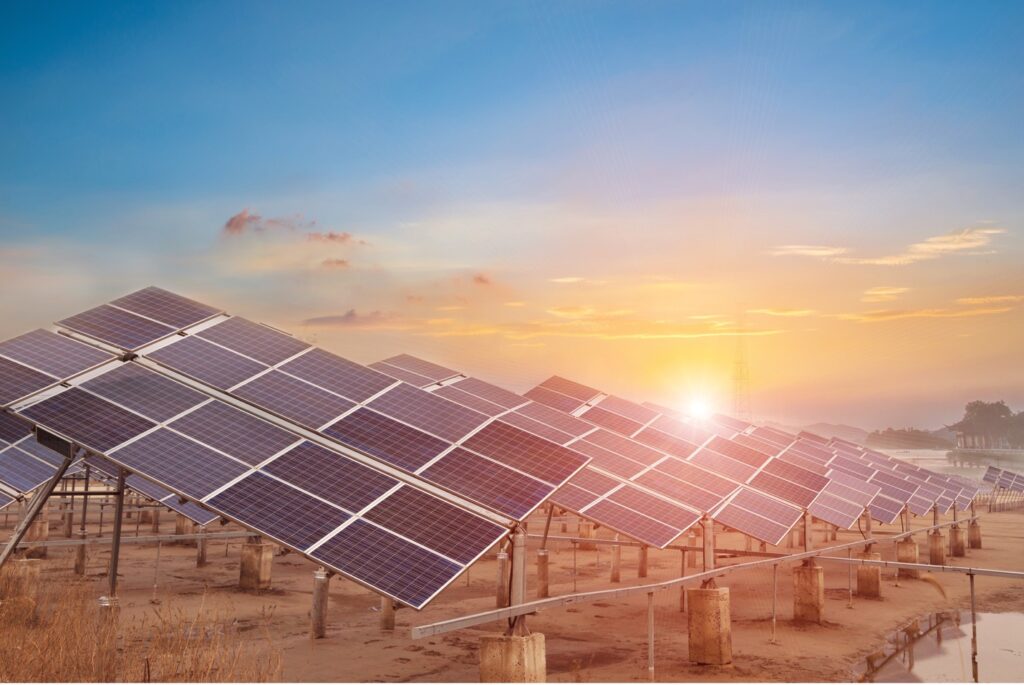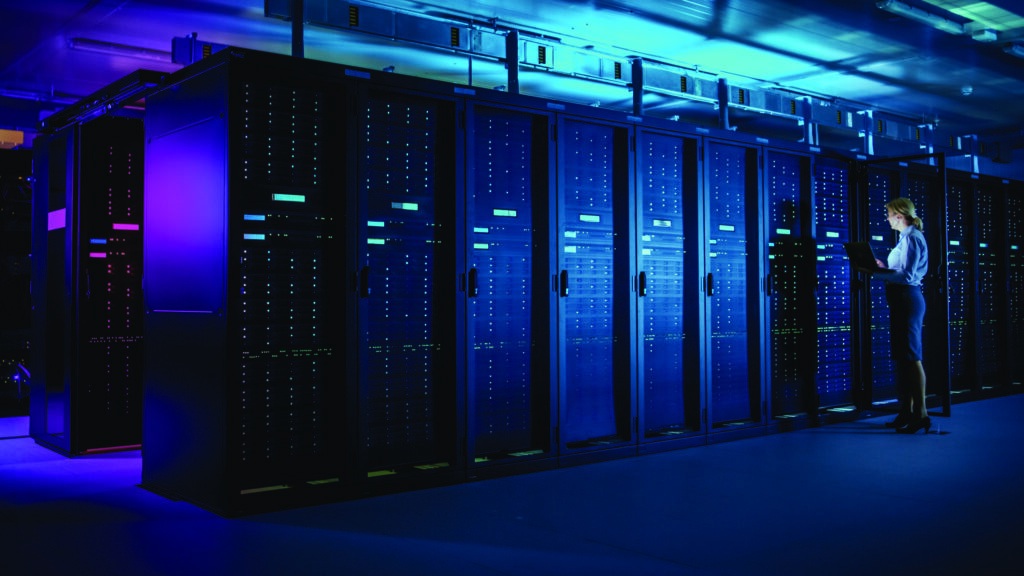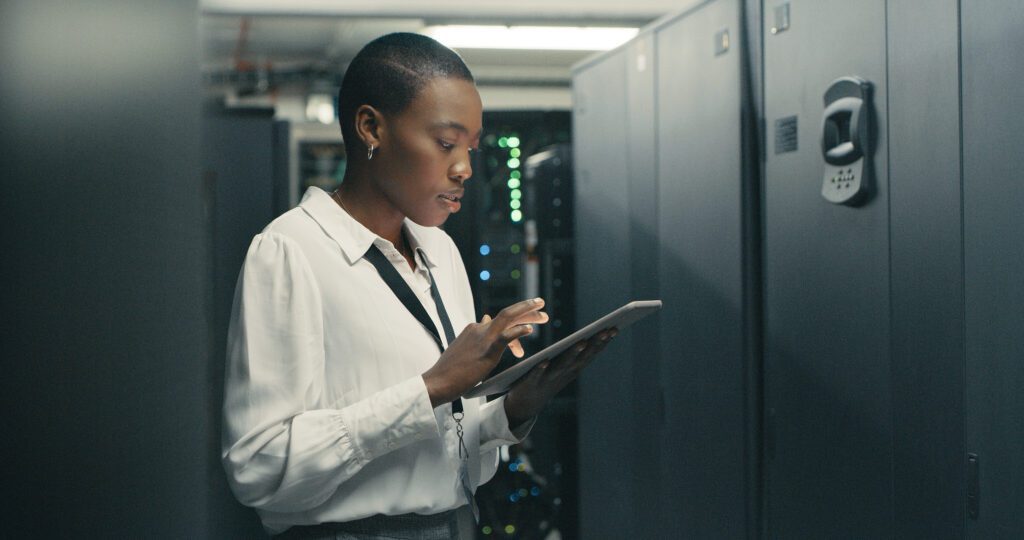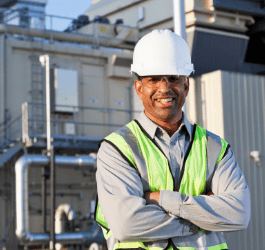Peter Gross, a truly amazing data center thought leader, once joked about the industry: “Everybody wants innovation — as long as it’s been in place 20 years.”
True, much has changed. Power densities quadrupled over the last decade. Power usage effectiveness plumbed to a new depth. Buying renewable energy (credits) from the grid arrived at scale. But one layer of IT physical infrastructure remains stuck in the past: The way data centers manage on-site backup power.
If our industry is going to tackle any of this decade’s top challenges — dramatic data growth, energy market volatility, grid constraints, and decarbonization — we’re going to have to consider some innovations younger than 20 years. The hyper-scalers are already doing this. Now the rest of the industry must catch up. In this article, we’ll tell you why the moment is now for sustainable, on-site, and adaptive energy architecture.

Something’s gotta give.
We’ll start with the urgency of the situation. It comes down to four basic realities: data growth, regulation, decarbonization, and reliability.
Data growth vs. grid capacity
The growth of data has been exponential. The growth of the utility grid? Not so much. Huge data demand, less grid capacity — something’s gotta give, and in some places, it already has.
The world’s data needs are growing rapidly. For instance, one expert estimated the computing demand of a generative AI search query is fivefold higher than non-AI queries. And we all know the added impact of 5G, crypto mining, and smart everything.
On the grid side, rapid electrification in buildings and transportation will eat up much of the new capacity. The bottom line: energy density and overall capacity needs will continue growing rapidly — and the grid will struggle to keep up.
International Energy Agency modeling predicts that by 2050, a yawning gap will have opened between electricity supply and demand. This gap is about 70 terawatt hours, which is almost twice as large as the global capacity that will exist 27 years from now, ~40 terawatt hours. If that feels far away, over the next five years, a McKinsey study projects that the U.S. alone will see 39 gigawatts of new data center demand — about 32 million homes’ worth.
Regulation
As this dynamic unfolds, regulators are taking interest. The SEC is proposing ESG regulations that will require publicly traded companies to report their climate risks. In Canada, regulators are asking crypto miners to curtail power consumption. In addition, in some regions and countries, new data centers are struggling to gain permits due to the limited grid capacity. Other states may ask data centers to switch to backup generator power during grid alerts for peak demand. With diesel recently hitting an all-time high, that regulation is a costly prospect.
Decarbonization
Even if the grid could handle new capacity demands, it’s facing another challenge: decarbonization. In New York and Oregon, new sustainability standards that target data centers are under consideration or have been enacted. And although ESG initiatives had a down year in 2022, they aren’t going away. Bloomberg research projects the ESG category to cover more than one-third of global assets under management, or $53 trillion-with-a-t, by 2025. Public and private sectors alike are pushing data centers to tackle emissions.
Reliability
And let’s not forget power reliability. The 2022 Uptime Institute report on IT downtime found that the cost of downtime continues to grow:
- One out of 5 data centers experienced a “serious” or “severe” outage in the last three years, and 80% of all data centers experienced some type of outage.
- Sixty percent of data center outages cost at least $100,000, while outages costing over $1 million increased their share from 11% to 15% over three years.
- Consider what that means: 1 out of 6 data center outages cost over $1 million in 2022.
- And the primary culprit of downtime is power interruptions, at 43%.

Sustainable and adaptive on-site energy architecture is the solution.
To summarize the problem statement: Data centers will face increasing difficulty sourcing enough reliable, cost-effective, and zero-carbon power from the grid.
To solve it, let’s think outside the grid, as my colleagues at AlphaStruxure like to say. I’m proposing a behind-the-meter solution I call a sustainable and adaptive on-site energy architecture. (You could also call it a data center microgrid, but that term often gets misinterpreted.) Essentially, I’m talking about an on-site micro grid advisor software that manages some or all the following distributed energy resources (DERs):
- Renewables (e.g., rooftop solar)
- Battery energy storage systems and UPSs
- Fuels cells, including hydrogen and other nascent or emerging resources
- Combined cooling, heating, and power
- Right-sized natural gas or diesel generators
There’s nothing Earth-shattering about the system I’m proposing here. What is new is that it’s time to finally start using them. Keeping in mind the Peter Gross quote above, note that many of these innovations have already been battle-tested by the hyper-scalers and other data centers in the Nordics.
Let’s compare your current options.
The question you might have: “How does this approach compare to a conventional backup power system?” After all, generators coupled with UPSs are the tried-and-true technology for data center reliability. Here, they remain an essential piece of the puzzle — but there’s also a diversification away from them toward lower-carbon DERs.
Another big difference is that the system I propose is much smarter than a conventional system. It’s not just changing how you source energy — it changes how you manage it. Your “micro grid advisor” uses AI-powered analytics, and can manage smart microgrid controllers to articulate and orchestrate parts of your entire facility’s electrical infrastructure. This system autonomously optimizes DER resources, manages demand response, and toggles between island and non-island modes. With all this intelligence, it becomes much easier to right-size your system and shrink your emissions while achieving resilient operations.
That brings me to the two adjectives that describe this on-site energy architecture: sustainable and adaptive.
- Sustainable: As data centers grow denser and the grid gets shakier, you’ll need a better resilience process. To meet this need without raising Scope 1 emissions, you likely don’t want to use more fossil-fuel-powered generators. Keep in mind these same generators will be emitting carbon decades in the future, making net-zero emissions tougher to reach. With this system, you improve sustainability by shifting your storable energy sourcing toward hydrogen and batteries.
- Adaptive: By “adaptive,” I’m referring to an energy system that offers flexibility across the design, build, operate, and maintain lifecycle. The way you design and build your system should be customizable, yet modular, without breaking the bank. You can adapt to your specific site condition, technology evolution, and maturity without changing your design. Such a design supports existing options: a new DER may be added to spare or new capacity of a data center generator bus. The site loads see the on-site energy as an additional source, with minimal modification of low-voltage interlocks and tie breakers.
In the operate and maintain stages, you can achieve adaptivity via software, AI tools, and smart controls. You can orchestrate two-way energy flows, or shift around loads as needed to achieve 24/7 sustainable power matching. Drive down energy waste. In other words, you adapt your energy management in real-time based on resilience and sustainability considerations.
Of course, this is just a high-level overview. I realize there are complex cost-benefit analyses to conduct with shifting away from diesel generators. I encourage you to check out an Schneider Electric white paper on the subject of trade-offs.

Consider the “plug-in hybrid” approach.
If this still seems abstract, notice the conceptual similarities between this energy architecture and another technology: the plug-in hybrid vehicle.
Many data centers may not be ready to go fully electric due to batteries’ capacity and cost limits. The same goes for certain consumers, who might not buy electric vehicles (EVs) due to a lack of charging infrastructure and driving range. Regardless, consumers want to transition away from internal combustion engine (ICE) vehicles because of concerns about fuel prices and emissions.
The compromise solution is the plug-in hybrid, which has a bigger battery than a pure hybrid, yet a significantly smaller battery compared to a true EV. With a more powerful battery, these vehicles can handle 98% of all trips via the electric battery alone — no gas is needed. And for the rare trip lasting more than 50 miles, your gas-powered motor kicks in and can take you several hundred more miles. Because your vehicle is more efficient and your battery can handle your daily needs, you can right-size your ICE while downsizing your carbon footprint.
The same logic applies to sustainable and adaptive on-site energy architecture. Most power outages are short — on average, the U.S. sees about two hours of outages per year, excluding major events. You might not need a huge bank of generators to handle them. A robust battery energy storage system (BESS) can get you a few extra hours of uptime. In one internal analysis our team did, a 4 MW/4MWh BESS covered 75% of historical outages with no need to fire up the generators.
And for the rare long-term outages, you can still rely on generators and, increasingly, fuel cells. Meanwhile, your batteries (re)charge via your rooftop solar, giving you extra mileage. In fact, EV manufacturers are now testing the self-generation concept by placing solar panels on car roofs.
The upshot: You’ve added more resilience and sustainability without adding more generator capacity or emissions. And because your intelligent system can engage in demand response programs, you can minimize your utility bill every day there isn’t an outage. Generators can’t do that.[1]
“The status quo is just as much of a choice as change.”
That’s another quote I like, and it comes from Aamir Paul, President of Schneider Electric North America. But I’d like to put a twist on it: The status quo has become just as much a risk as change. The on-site electrical system that’s gotten you this far may not be the system that takes you where you need to go next. In a risk-averse industry such as ours, we should be clear-eyed about the risks of action and inaction.
Of course, there are no simple solutions to the problem statement I laid out above. And what I’m proposing has its trade-offs. So, I encourage you to conduct a feasibility study for what a sustainable and adaptive on-site energy architecture (aka a microgrid) would look like at your specific data center. This study is critical to understand the constraints, establish the risks you might face, and identify what solutions make the most sense for your organization. They’re a great place to start.
[1] Even generators that can participate typically require the site to fully transfer from the grid (i.e., the generators aren’t configured for grid-parallel operation). Once a site transfers, the site’s operational procedures require the business day to end before retransferring to utility power, which can incur hours of additional generator runtime. A BESS may supply power to reduce load while the site remains grid-tied, reducing risk.


